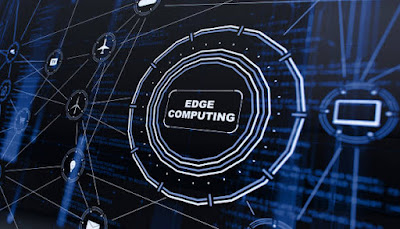A lot of factors have made edge computing cheaper and easier they include;
•High speed and responsiveness
•Variety
•Security
•Reliability
•Real-time results
•Cost
•Low latency
WHAT IS EDGE COMPUTING
Edge computing is the science of processing data locally near the client. In this new technology, data does not have to be transported from the cloud to the user because capturing, managing, storing, analyzing, processing, and retrieving data are done near the end user. This process has brought about reduced latency and has also improved sustainability
FACTORS THAT HAVE MADE EDGE COMPUTING CHEAPER AND EASIER
1. high speed and responsiveness.
Every second, demands are made for information from the internet. These pieces of information are made with great urgency and most times little delays could prove to be very detrimental. In a case of an autonomous vehicle, There is constant interaction with the internet for specific data to make timely and precise decisions and if these data are delayed even a second, it could cause a lot of damage. Edge computing significantly increases the speed of response by cutting the norm of processing data in the cloud. The ability of Edge computing to process and analyze data near the end user ensures that data requested by the user ( in this case the autonomous vehicle) gets to the user on time.
A fraction of a second can mean life or death in the health sector. In the Aviation and financial sector, Unplanned delays could cost billions of dollars. There are a lot of damages that could be caused by slow speed. Slow speed also harms businesses because it affects the reputation of the business and it frustrates customers. Edge computing reduces the physical distance data has to travel thereby lowering latency by processing data close to the end user.
2. Variety.
Edge computing gives businesses an opportunity for flexibility. With Edge computing, one can choose to keep data close or store it in centralized cloud servers, or both. Using cloud computing, businesses have only one option which is to store data in the cloud and have to wait for individuals or specially designed robots to log in with devices and interact with centralized cloud servers before gaining access to those data. But with edge computing, there is an option to store data in both these cloud servers and at nodes( data centers) near the end user.
How can edge computing be used to improve sustainability
3. Security.
In as much as cloud computing has been seen to be secured, it is still vulnerable because the design is fundamentally centralized. Edge computing processes, stores and distributes data over a wide range of data centers ( nodes), this makes it possible that power outages cannot bring an entire edge computing setup down. Edge computing also reduces interaction with public cloud servers thereby limiting the possibility of interception of data because the data needed is processed at the edge and does not need to travel to the end user from the cloud.
while there are genuine concerns that edge computing devices are not capable of withstanding malware attacks, edge computing architecture makes it possible for infected areas to be isolated, thereby keeping the system running and its quick networking system can speedy signal these malware attacks.
4. Reliability
Another factor that has made edge computing cheaper and easier is its reliability. Edge computing devices are very reliable and most web development companies in the United States use edge computing. Edge computing devices can not be limited by power outages in a data center. In a case of failure in a data center, edge computing devices can function partially on their own until the data center is restored.
5. Real-time results.
Because data collected by edge computing devices are processed near the environment and output to the end user, the data are with few errors because environmental factors are factored into the filtering of this information. Edge computing enables IoT devices to collect large volumes of useful and important data for analysis.
6. Cost.
Edge computing processes data near the end user and does not need an internet connection to retrieve the processed data. Edge computing uses LAN to process data and only requires an internet connection to send the already processed data to the cloud if requested.
7. Low latency.
Edge computing reduces latency for end users by cutting off the time needed for interaction with the cloud. Devices of the edge process data close to the client and do not require interaction with public cloud servers to obtain data. This has brought about increased speed and responsiveness.







0 Comments